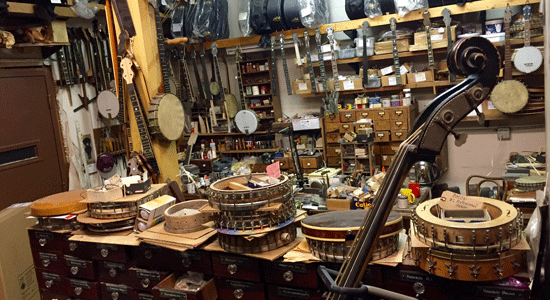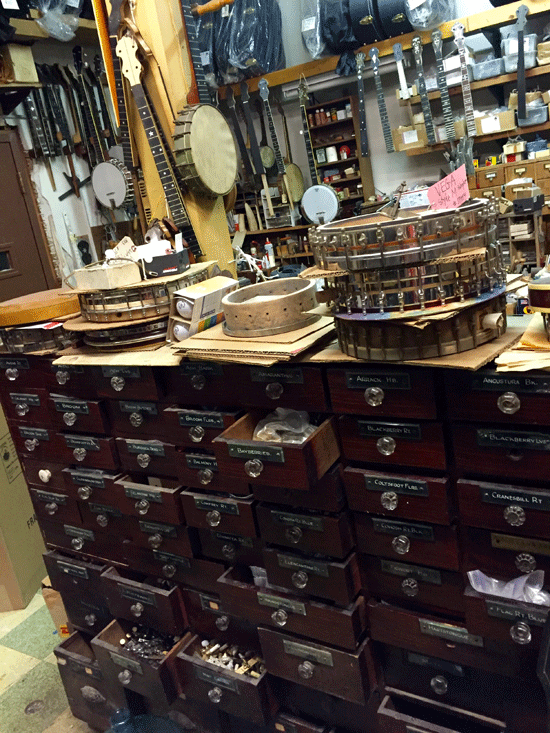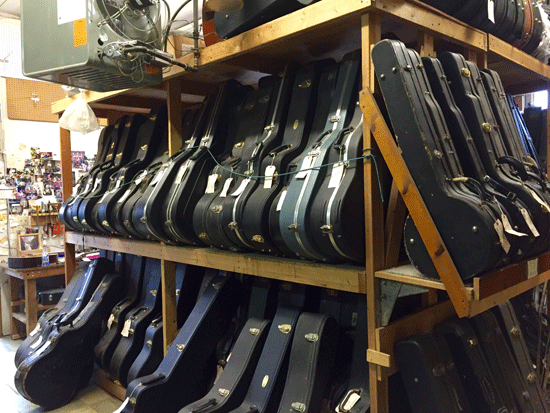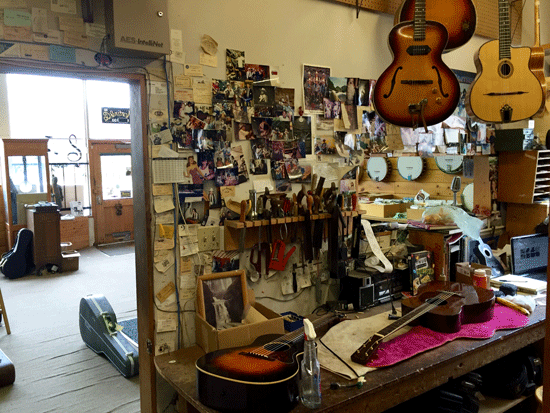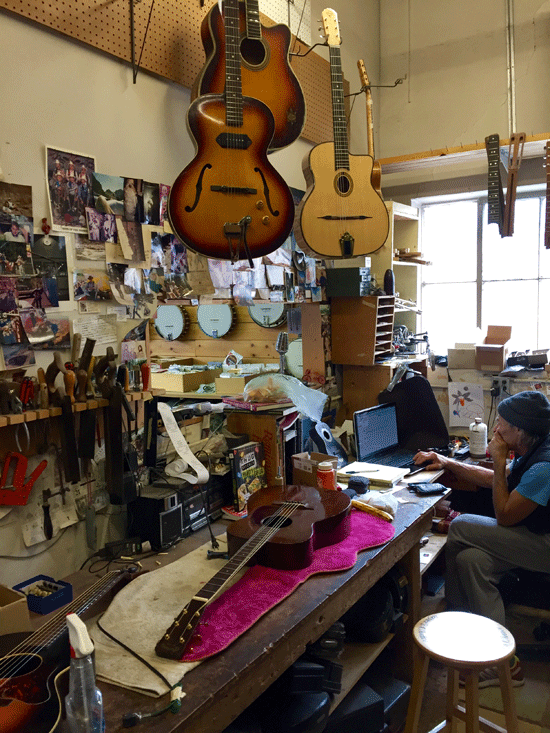It’s one thing to be a creative quadruple threat (film actor, stage actor, television actor, musician); it’s another thing entirely to excel as a quadruple threat for the better part of 43 years. From multiple Tony nominations—and wins—to starring roles on Fame and Treme, Michael Cerveris may be best known for his versatility as a thespian, but he proves just as formidable behind the mic on his long-awaited sophomore solo album, Piety. His sonic pedigree is unsurprisingly impressive, having shared the stage with the likes of the Breeders, Bob Mould, Teenage Fanclub and Frank Black. Cerveris will be guest editing magnetmagazine.com all week. Read his MAGNET Feedback.
Cerveris: I like to look for local instrument shops when I’m on the road, and I was working recently in northern Utah and had a little time off to explore. A Google search turned up the local Guitar Center and the usual shops that carry new Japanese- and Mexican-made American guitars, and then one place with a slogan offering “Instruments For All Occasions.” Intrigued to find out what occasions besides making music where being accommodated, I called the phone number for Intermountain Guitar And Banjo. And left a message. Because the shop doesn’t so much have business hours. I learned, when he called me back a little later, that Kennard Machol’s whim is the chief determinant of when the shop might be open. And how many fret jobs and structural repair work he has waiting for him on his luthier’s desk, and whether he has the grandkids today. So we found a time a few days later for me to drive down the mountain and into Salt Lake City. And, like so many Mormons before me, I was visited by a vision. Kennard’s place is large, with assorted odd ukuleles and cowboy guitars painted and hanging around the walls, cases of varying age and stand in rows on the floor, either recently dropped off or awaiting a return to their owners soon after some meticulous and loving repair. A small room to the side holds the handful of quality new Martins and Gibsons that Kendall can make available for sale (“I just don’t care about new guitars,” he says, “but people still want ’em”). And then the back room, smelling like my grandfather’s workshop (he repaired wind instruments for the Pittsburgh School System), filled from floor to ceiling with cases, headstocks, necks, headless guitar bodies, banjo tone rings and drawers of parts with the repair desk looking like something from Geppetto’s workshop, except for the incongruous notebook computer perched in the corner.
I told Kennard I wasn’t looking for anything in particular, just kind of seeing what he had. He was fine with that, didn’t seem to be in a hurry. We talked about guitars I have, ones I’ve wanted, things he’s played and liked. Nothing remotely sales pitchy. In fact, it almost felt as though the shop was a kind of halfway house or home for retired guitars where they could live out their days in the company of elderly wooden companions with visits from the occasional relative on holidays. But little by little, Kennard brought out battered musty cases from the back and opened them for me, handing them to me along with a story or bit of history and stood without comment as I played and turned the instrument over in my hands. I can’t imagine the number of amazing (and dire) players he’s heard put his instruments through their paces, but for one of the only times I can remember, I felt so matter of factly not judged that I could really play long enough to get a feel for each guitar. Eventually, he retired to his bench to set some repair work done and left me to dig out as many cases as I wanted and play for hours. It might not be the most efficient idea of salesmanship, but it was certainly effective. At least in my case. By the time I’d left, I had it narrowed down to a 1955 Martin D-18 and a 1967 D-35. I managed to leave without buying anything, and then proceeded to dream of them both for the next few days until I could find a time to meet up with Kennard again in the shop.
When Kennard returned my call, he told me I’d clearly “got the vibe of the place” and was welcome to come hang out whenever I liked, “Hell, I’ll just give you a key.” After a little more playing the two guitars, I decided the D-18 was probably closer to the pair of ’50s Gibsons I usually play, so the D-35 became My First Martin. I’m loving it more every day, not only because of the huge sound and warmth and shimmering tone, but because of the memory of the afternoons I spent in the shadow of the Wasatch Mountains talking Brazilian Rosewoods and Western Swing classics and the intricacies of keeping grandchildren busy with a guy who has been finding, restoring and selling guitars and banjos since the early ’70s. I mean, I care a lot about the sound of an instruments, but I care about the stories and life in them almost just as much. And I love the way time stands still in a place like Intermountain.
More photos after the jump.


